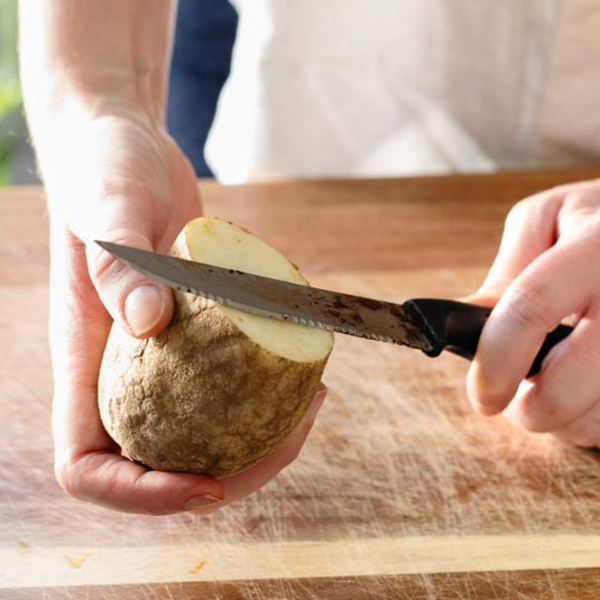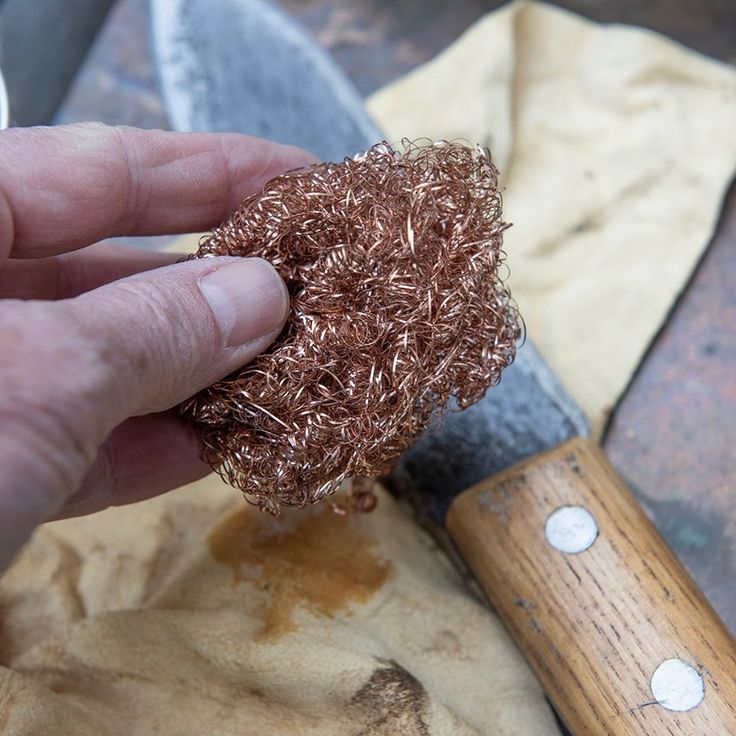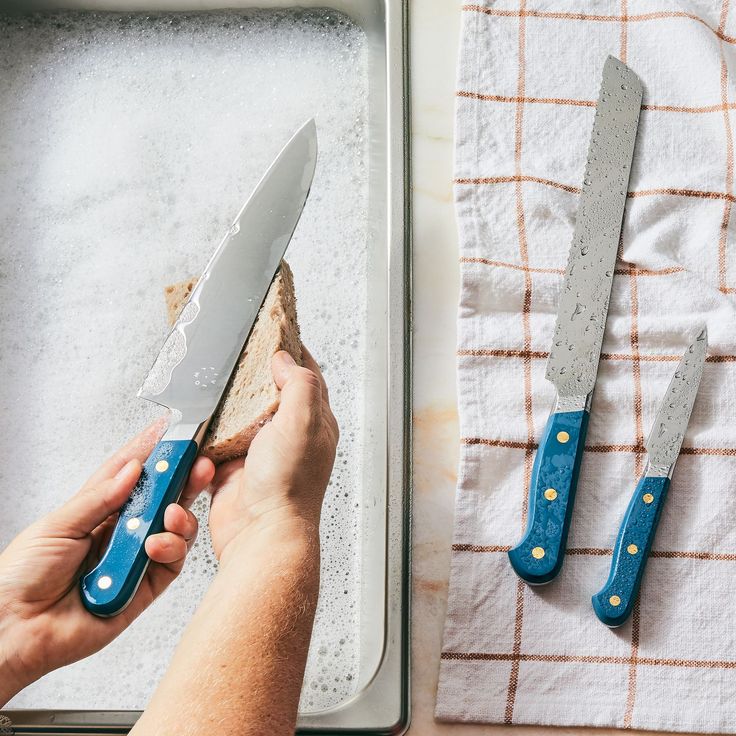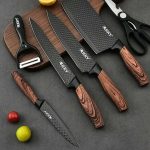How to remove rust from kitchen knives is a common concern for many home cooks and professional chefs alike. Rust not only affects the aesthetics of your knives but can also impact their performance and longevity. Understanding how to effectively remove rust is crucial for maintaining your kitchen tools and ensuring they remain in optimal condition. This article will explore various methods to remove rust, preventative measures, and tips to keep your knives rust-free for years to come.

Understanding Rust and Its Causes
Rust formation occurs when iron or iron-based metals, such as the stainless steel commonly used in kitchen knives, undergo a chemical reaction with moisture and oxygen. This reaction leads to the oxidation of the metal, resulting in rust. Rust not only affects the appearance of kitchen knives but can also compromise their functionality. Understanding the causes of rust is essential to prevent damage to your tools. Several factors can contribute to the rusting of kitchen knives, including:
- Moisture: Excess moisture is a significant culprit. This can come from multiple sources, whether it be washing the knives, high humidity in the kitchen, or exposure to wet foods. Even leaving knives damp after washing can set the stage for rust to develop.
- Lack of Maintenance: Neglecting to clean and dry knives after use can greatly accelerate rust formation. If food particles are left on the blade, they can trap moisture and promote rusting. Regular cleaning and thorough drying are vital to the longevity of kitchen knives.
- Poor Quality Materials: Not all stainless steel is created equal. Lower-quality blades may be more susceptible to rust due to inferior metal composition. Investing in higher-quality knives with better corrosion resistance is a smart choice for long-term use.
- Storage Conditions: Storing knives improperly—like in damp drawers or without protective sheaths—can introduce moisture and lead to rust.
Understanding these factors is crucial for knowing how to remove rust from kitchen knives and preventing it from occurring in the first place.
Preparing for Rust Removal
Before diving into the various methods of rust removal, it’s essential to gather the necessary tools and materials. Depending on the method you choose, you may need:
- Dish soap
- Baking soda
- White vinegar
- Lemon juice
- Salt
- A soft scrub pad or sponge
- Steel wool or fine sandpaper
- A microfiber cloth
- Cooking oil (for post-cleaning maintenance)
Make sure to choose a workspace with good ventilation, especially if you are using acidic substances like vinegar or lemon juice.

Effective Methods for Removing Rust from Kitchen Knives
Method 1: Baking Soda Paste
One of the simplest and most effective ways to remove rust is by using a baking soda paste. Baking soda is mildly abrasive and acts as a gentle cleaner that won’t damage the blade.
- Create the Paste: Mix equal parts baking soda and water to form a thick paste.
- Apply the Paste: Spread the paste evenly over the rusted areas of the knife.
- Let It Sit: Allow the paste to sit for about 15-30 minutes to penetrate the rust.
- Scrub Gently: Using a soft scrub pad or sponge, gently scrub the rusted areas. Be careful not to scratch the blade excessively.
- Rinse and Dry: Rinse the knife thoroughly with warm water and dry it immediately to prevent further rust formation.
Method 2: White Vinegar Soak
White vinegar is an effective and natural rust remover due to its acetic acid content.
- Soak the Knife: Submerge the rusted knife in a container filled with white vinegar. Allow it to soak for at least 30 minutes, or up to several hours for heavy rust.
- Scrub the Rust: After soaking, take the knife out and use a soft sponge or cloth to scrub away the rust. For stubborn spots, you can use steel wool or a fine-grit sandpaper, but be sure to use caution not to damage the blade.
- Rinse and Dry: Rinse the knife thoroughly with water and dry it immediately with a microfiber cloth.

Method 3: Lemon Juice and Salt
Lemon juice is acidic and works well to break down rust when combined with salt.
- Create the Mixture: Sprinkle salt over the rusted areas of the knife, ensuring it’s well covered. Squeeze fresh lemon juice over the salt until it’s saturated.
- Let It Sit: Allow the mixture to sit for about 30 minutes. The salt will create a mild abrasive action while the lemon juice eats away at the rust.
- Scrub the Area: After the time has elapsed, scrub the knife gently with a sponge or cloth until the rust is removed.
- Rinse and Dry: Rinse the knife thoroughly and dry it immediately to prevent re-rusting.
Method 4: Commercial Rust Remover
If the rust is particularly stubborn or extensive, you may choose to use a commercial rust remover designed for metal tools.
- Choose the Right Product: Look for a rust remover that is safe for kitchenware. Read labels to ensure it’s suitable for stainless steel knives.
- Follow the Instructions: Apply the remover according to the manufacturer’s instructions for the best results. Ensure you wear gloves and work in a well-ventilated area.
- Rinse and Dry: After using the commercial product, rinse the knife thoroughly and dry it immediately.
Method 5: Steel Wool or Fine Sandpaper
For severe rust damage, light scrubbing with steel wool or fine-grit sandpaper may be necessary.
- Select Your Tool: Choose fine steel wool or high-grit sandpaper to avoid damaging the knife.
- Gently Scrub: Lightly scrub the rusted areas with the steel wool or sandpaper. Apply minimal pressure to prevent scratches.
- Rinse and Dry: After the rust is removed, rinse the knife under warm water and dry it thoroughly.

Preventative Measures to Avoid Rust
Now that you know how to remove rust from kitchen knives, it’s equally important to take steps to prevent it from occurring in the first place. Here are some tips to keep your knives rust-free:
1. Wash and Dry Immediately
After using your knives, wash them by hand with warm, soapy water. Avoid soaking them in water and always dry them immediately to prevent moisture buildup.
2. Use the Right Storage
Store your knives in a dry place. Use a knife block, magnetic strip, or protective sheaths to prevent moisture exposure. Avoid keeping them in damp drawers.
3. Apply Oil Coating
Applying a thin layer of mineral oil or food-safe oil can help protect the blades from moisture and rust. This is especially useful if you keep your knives stored for extended periods.
4. Choose Quality Knives
Investing in quality kitchen knives made from high-grade stainless steel can significantly reduce the risk of rust formation. Higher-quality blades typically have better resistance to rust and corrosion.
5. Regular Maintenance
Regularly inspect your knives for any signs of rust or dullness. By catching issues early, you can avoid extensive rust removal processes later.
6. Avoid Harsh Environments
Try not to expose your knives to overly humid environments. If you live in an area with high humidity, consider using desiccants in your knife storage area to absorb excess moisture.

When to Seek Professional Help
While many rust issues can be resolved with simple home remedies, there are situations where professional assistance is necessary. It’s essential to recognize when your kitchen knives require expert attention, particularly if rust formation is severe or the knives have suffered significant damage. Here are a few scenarios in which seeking professional help may be beneficial:
1. Extensive Rust Damage
If your knives exhibit extensive rust that cannot be effectively removed using standard cleaning methods, consider consulting a professional. Some rust damage may penetrate deep into the metal, requiring specialized tools and techniques for restoration. A professional sharpening service can assess the level of damage and use appropriate methods to restore the knives to good condition. Attempting to resolve extreme rust on your own may lead to further damage, so getting expert help can save your knives.
2. Blade Integrity Issues
Another crucial factor is the integrity of the blade. If rust has compromised the strength of the blade, it may become unsafe to use. A weakened blade can break or chip during cutting, causing accidents in the kitchen. If you notice any signs of pitting, flaking, or structural weakness, it is advisable to consult a professional. They can evaluate whether the knife is repairable or if it is time to replace it altogether.
3. Uncertainty
If you ever feel uncertain about handling rust removal or proper maintenance techniques, do not hesitate to seek professional advice. Consulting an expert can provide peace of mind and ensure that your knives are maintained correctly. Proper care is vital for longevity, and professionals can share tips to prevent future rust formation. Investing in expert guidance helps maintain the quality and performance of your valuable kitchen tools.

Conclusion
Learning how to remove rust from kitchen knives is essential for maintaining their functionality, aesthetics, and longevity. You can effectively combat rust using various methods such as baking soda paste, vinegar soaks, and lemon juice mixtures. Regular maintenance and preventative measures can significantly reduce the risk of rust returning.
Your kitchen knives are not just tools; they are investments that enhance your cooking experience. By understanding how to care for them and remove rust when needed, you ensure they remain reliable companions in your culinary adventures. With the right knowledge and techniques, you can keep your kitchen knives in pristine condition, ready to assist you in creating delicious meals for years to come.

